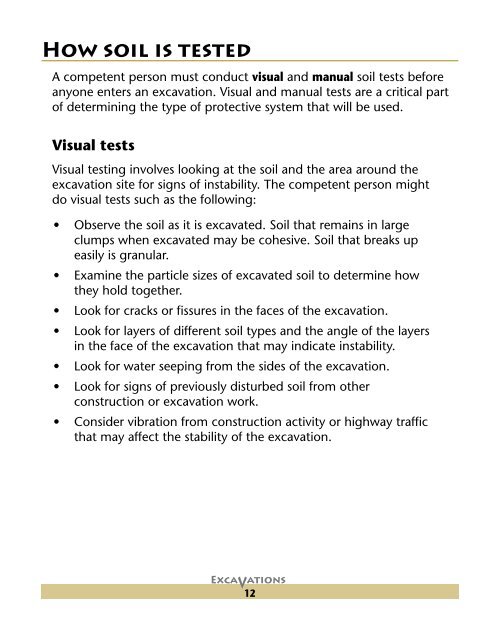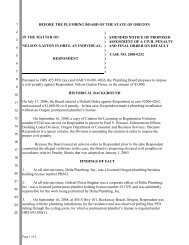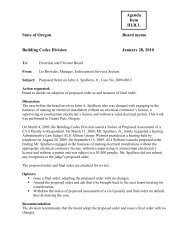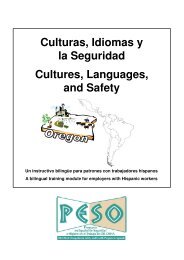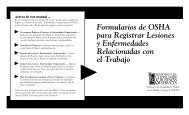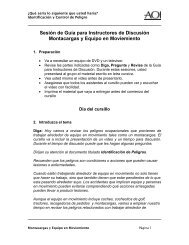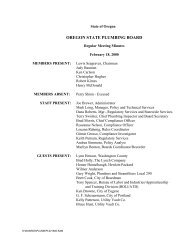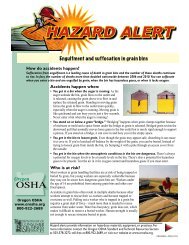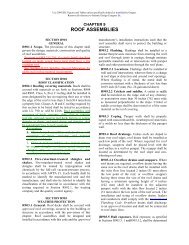ExcAVATIONs
ExcAVATIONs
ExcAVATIONs
You also want an ePaper? Increase the reach of your titles
YUMPU automatically turns print PDFs into web optimized ePapers that Google loves.
How soil is tested<br />
A competent person must conduct visual and manual soil tests before<br />
anyone enters an excavation. Visual and manual tests are a critical part<br />
of determining the type of protective system that will be used.<br />
Visual tests<br />
Visual testing involves looking at the soil and the area around the<br />
excavation site for signs of instability. The competent person might<br />
do visual tests such as the following:<br />
• Observe the soil as it is excavated. Soil that remains in large<br />
clumps when excavated may be cohesive. Soil that breaks up<br />
easily is granular.<br />
• Examine the particle sizes of excavated soil to determine how<br />
they hold together.<br />
• Look for cracks or fissures in the faces of the excavation.<br />
• Look for layers of different soil types and the angle of the layers<br />
in the face of the excavation that may indicate instability.<br />
• Look for water seeping from the sides of the excavation.<br />
• Look for signs of previously disturbed soil from other<br />
construction or excavation work.<br />
• Consider vibration from construction activity or highway traffic<br />
that may affect the stability of the excavation.<br />
12


